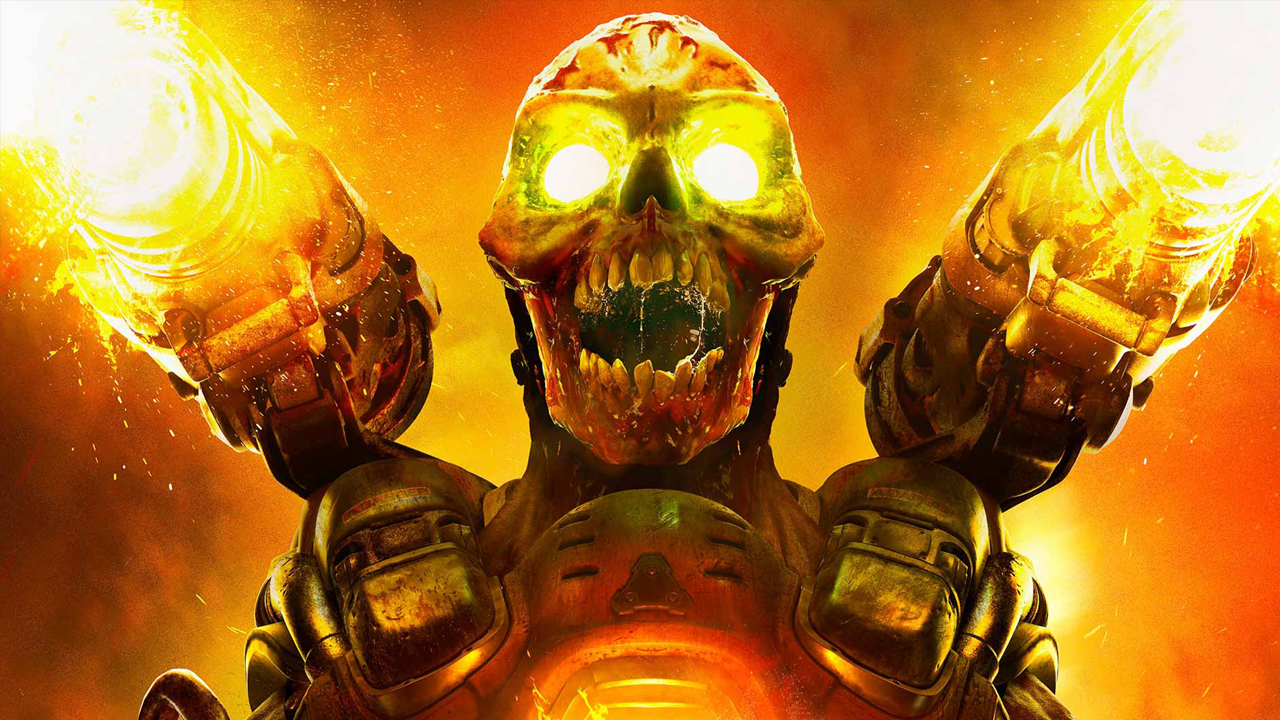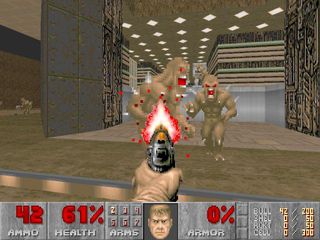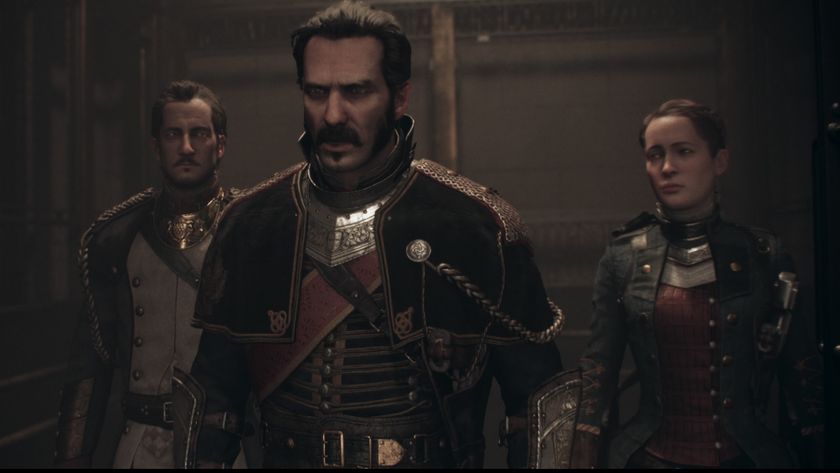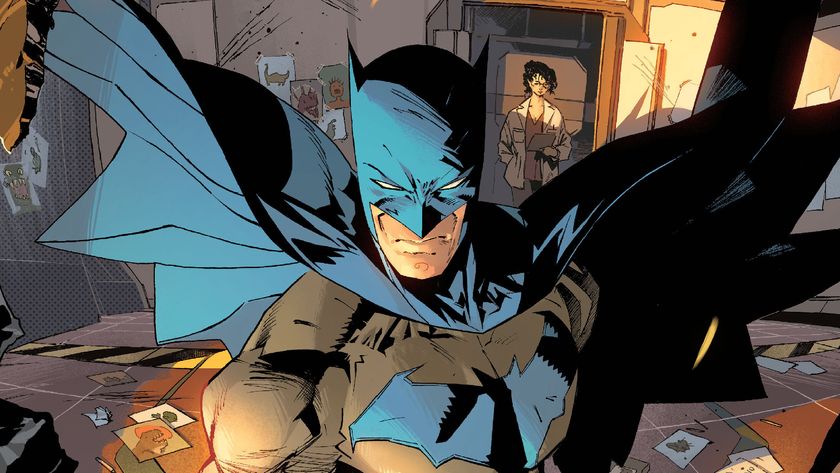Doom is to shooters what Scream was to horror

Subversion is a suitably slippery concept to get to grips with. Its meaning shifts and slides depending on the words around it. It can signify anything from wry self-deprecation to purposeful attempts at undermining cultural norms. No wonder it's often overused, abused and misunderstood.
An example of the latter meaning was the original Doom. It had few expectations to subvert, since first-person shooter games were still new. Instead it attempted the grander meaning of subversion: it tried to upset the prevailing cultural order. Its devilish imagery seems almost quaint now, but this wasn't long after the Satanic Panic scandals of the late 80's. There was genuine anxiety that satanic cults might be using video and role-playing games as recruiting tools. Releasing a game that played to those fears was a bold statement about their absurdity.
At the other end of the spectrum is the 1996 horror classic Scream. At the time, horror as a movie genre was dead on its rotting feet, often shuffling straight to video. By playing on the genre tropes that were strangling its predecessors Scream reversed that trend. It was fresh, funny and got there by subverting our expectations of how a horror film should work. Arguably, although its subversion was more limited in scope, it had a more profound impact. Doom just reinforced existing trends, whereas Scream completely reinvented our expectations of horror cinema.

When Id revisited Doom in 2016 they tried to make something more true to the roots of the series than 2004's generic Doom 3. Instead of clothing modern shooter mechanics in a devilish skin, it needed to feel as culturally subversive as the original game. The question was how to shock people with gory, demonic imagery that became mainstream a decade ago?
With Christianity less of a force in Western discourse, Doom goes for its replacement: the church of consumer capitalism. Scattered throughout are holograms which preach grimly amusing messages of corporate subservience. They voice things many of us suspect but don't want to admit. Late in the game one intones "unlike everything else in your life, the work you do here matters!". It's like some dreadful corporate chant crystallizing what executives really think about work-life balance.
More telling is the way the Doom Marine reacts to his surroundings. Let loose in a technological wonderland he does nothing but destroy. Everything he interacts with, from doors to sophisticated machines, he does so by smashing, crushing or forcing. It's total disrespect for another thing we've come to worship: consumer electronics. Perhaps he's only too aware that they're also the primary tools with which corporations encourage us to buy their products.
It's ironic these messages come from entertainment software running on complex technology, both of which we bought from corporations. In that sense, Doom 2016 is subversive in the self-referential way that Scream is. With the player's actions being under their own control, it's hard for Doom to go further than this. Yet it tries, literally embedding the old inside the new. Hidden throughout the game are levers which open doors to levels re-created from the original 16-bit pixel art. Yet the weapons, monsters and HUD are still in their modern 64-bit polygonal glory. It reminds us both how far and how little the genre has evolved in the last 25 years.
Sign up to the 12DOVE Newsletter
Weekly digests, tales from the communities you love, and more

Similarly, for all its provocative send-ups of the genre that spawned it, Scream reverted to type when required. It was full of tension and mystery, violence and gore. Thus, it also mixed the familiar with the unexpected. At the same time it demonstrated that even allegedly sophisticated audiences still wanted to see blood and guts. It drove that point home by using old-fashioned corn syrup as fake blood which, inevitably, it riffed on in the dialogue. Some may feel that in doing so both game and film wanted have their cake and eat it, critiquing lurid content while capitalising on it. But that's part of the circular nature of subversion. It's hard to undermine something without reminding everyone of what it is you want to overthrow.
Doom plays with the player on a mechanical level too. Ostensibly it's a first-person shooter filled with guns for taking down targets from a distance. To stay alive the player is dependent on health and ammo drops from killing demons. But since these drop in place, to pick them up means you have to get up close and personal with the horrors. Glory kills and the chainsaw, which both gift you with extra items for killing in melee, emphasise this design aspect.
Hanging back and trying to gun things down can thus often lead to a quick death. For all that it's a "shooter", it punishes players who obey the conventions of that genre, instead encouraging close combat. This is like the way in which Scream punishes characters who obey the conventions of horror films. In the opening scene, Drew Barrymore's character calls "who's there?" into the darkness, shortly before the killer reminds her that doing so in a scary movie is a death wish. No prizes for guessing what happens next.
However, Doom's ultimate subversion may be in overturning the predominant design trends of the last decade. The modern FPS is all about multiplayer, whether competitive or co-operative. Id looked to be following that curve when it teased everyone with multiplayer footage of Doom in development. What we got on release was, much like the Doom Marine himself, aggressively alone. With a big solo campaign, user-generated levels and disappointing multiplayer, it felt like a clock reset on FPS design.
Having received widespread acclaim this new version of Doom may well prove as influential as its predecessor. And with many rejecting technology and consumerism in search of a mythic simpler age, it seems to have hit the cultural pulse too. Whether, like Scream, it has the power to overturn the conventions of an entire genre, only time will tell.
Matt is a freelance writer specialising in board games and tabletop. With over a decade of reviews under his belt, he has racked up credits including IGN, Dicebreaker, T3, and The Guardian.
Most Popular








